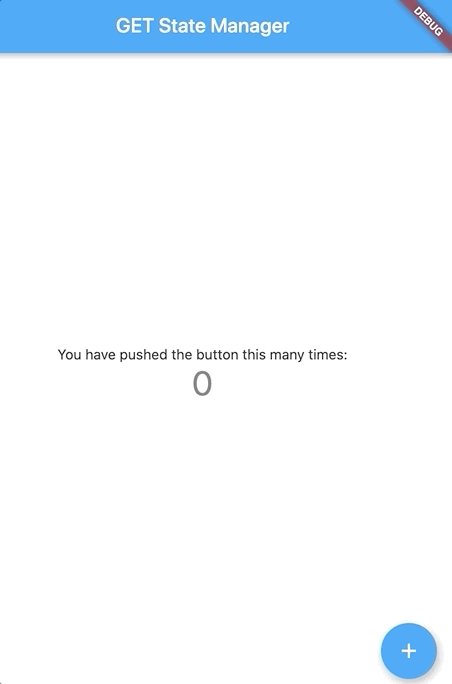State Management Using Get
16 Jun 2020The following article assumes you are already aware of State Management Basics. We’ll be using a package called GET for this article.
If you want to learn about the basics follow the official Flutter documentation which explains State Management very good: https://flutter.dev/docs/development/data-and-backend/state-mgmt
GET, Juiced State Manager
We do have multiple options to achieve this namingly InheritedWidgets, ScopedModel, Provider, Bloc, MobX etc. But we’ll be using GET which is not just a simple State Management solution but a Micro-Framework for Flutter. It has quite a lot that we can do with it like Dependency Management, Router, Utils/Helpers and more.
So basically GET is on Steroids. We’ll start by talking about how it can help us manage our state.
State Management
We’ll start by creating a new Flutter project. We’ll use the default counter app and modify it using GET.
Importing Package
In pubspec.yaml import GET package. pubspec will then look something like this:
environment:
sdk: ">=2.7.0 <3.0.0"
dependencies:
flutter:
sdk: flutter
cupertino_icons: ^0.1.3
get:
dev_dependencies:
flutter_test:
sdk: flutterBase Setup
In your main.dart rename MaterialApp to GetMaterialApp.
void main() {
runApp(MyApp());
}
class MyApp extends StatelessWidget {
// This widget is the root of your application.
@override
Widget build(BuildContext context) {
return GetMaterialApp(
title: 'Flutter Demo',
theme: ThemeData(
primarySwatch: Colors.blue,
visualDensity: VisualDensity.adaptivePlatformDensity,
),
home: MyHomePage(),
);
}
}Create your ViewModel/Controller
Our ViewModel will have our business logic. Create getters and setters for the counter variable.
class CounterViewmodel extends GetController {
int _counter = 0;
int get counter => _counter;
set counter(int val) {
_counter = val;
update();
}
}Wrap the widget you want to update in GetBuilder
GetBuilder<CounterViewmodel>( //It's something like a consumer that we use in Provider
init: CounterViewmodel(),
builder: (_) => Text(
'${_.counter}',
style: Theme.of(context).textTheme.headline4,
),
),
To trigger an increment we’ll do something like this
floatingActionButton: FloatingActionButton(
onPressed: () {
final _viewmodel = Get.find<CounterViewmodel>(); //Just like we use Provider.of for Provider
_viewmodel.counter = _viewmodel.counter + 1;
},
tooltip: 'Increment',
child: Icon(Icons.add),
),
Run your app and Voila!. That’s all you need.

Upcoming Articles
I’ll be writing a list of Articles that will cover almost everything that we can do with GET namingly:
- Dependency Management
- Router
- Other Fun Helpers/Utilities (SnackBars, Dialog, BottomSheet etc)
- Architecture using GET
Hope it helps.